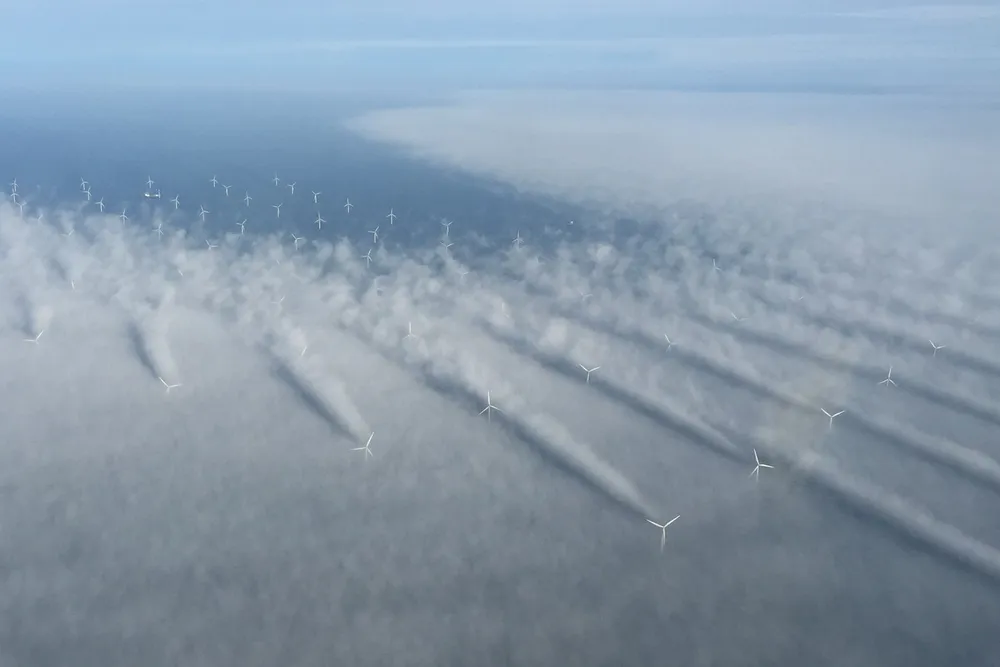RWE, BP and Total to assist in new North Sea wind wakes study
Research project aims to improve accuracy of modelling wind wakes as tensions rise between rival developers over inter-farm wake losses

Researchers from Germany, Denmark and the Netherlands are teaming up to improve the accuracy of wind wake modelling in the North Sea, with offshore wind giants including RWE, BP and TotalEnergies set to assist on the project.
EuroWindWakes aims to “significantly improve the accuracy” of forecasts for wind wakes between huge offshore clusters in the North Sea, the Fraunhofer Institute for Wind Energy Systems IWES in Germany announced in a press release on Monday.
Current models often only allow for an “inaccurate representation” of wind wakes, it said. EuroWindWakes hopes to change that, something that would also allow for improved maritime spatial planning to help reduce inter-farm wake losses.
Fraunhofer is teaming up on the project with the Carl von Ossietzky University of Oldenburg in Germany, the Technical University of Denmark (DTU) and Delft University of Technology in the Netherlands. Dutch consultancy Pondera, Danish companies EMD International and DHI and the German Meteorological Service are also partners.
Four major offshore wind developers, RWE and EnBW from Germany, BP from the UK and France’s TotalEnergies are associated partners on the project.
What are wind wakes?
Wind turbines extract kinetic energy from the air to produce electricity. When they do this, they leave trails of slower and more turbulent wind stretching behind them. These trails, known as wind wakes, can stretch vast distances – even 100km. If one wind farm is caught in the ‘shadow’ of another’s wake, the slower wind speed will mean it generates less power. One wind farm ‘waking’ another is sometimes colloquially called ‘wind theft’.
There is much debate in those disputes – which seem certain to be replicated around the North Sea in coming years – over the accuracy of wake loss assessments that are being submitted and the validity of different models for assessing wind wakes.
EuroWindWakes would be able to help on this front. Currently, Fraunhofer said that wind wake models are inaccurate by around 20-30% – EuroWindWakes hopes to trim that to 10% through further validation.
This will be crucial, said Fraunhofer, given that some areas of the North Sea look set to see the highest density of offshore wind turbines globally. North Sea countries agreed in 2023 to try and develop 300GW of offshore wind power in the basin by 2050.
This will impact on power production, said Fraunhofer. “So-called wake effects will be very evident.” RWE chief executive Markus Krebber recently called on Germany to cut its offshore wind target in light of predicted inter-farm wake losses.
Bernhard Stoevesandt, project coordinator at Fraunhofer, noted that Germany, Denmark and the Netherlands have already carried out wake research “on smaller scales.”
Jake Badger, the head of resource assessment and meteorology at DTU, said: "The fact that the collaborating countries are North Sea neighbors opens opportunities to really work on cross-border effects of wind farms, and bring together stakeholders, including authorities, to use our methods and results in relation to long-term planning".
Fraunhofer said that work on EuroWindWakes began late last year and a kick-off meeting for the project took place in February. The project will run for three years.
(Copyright)